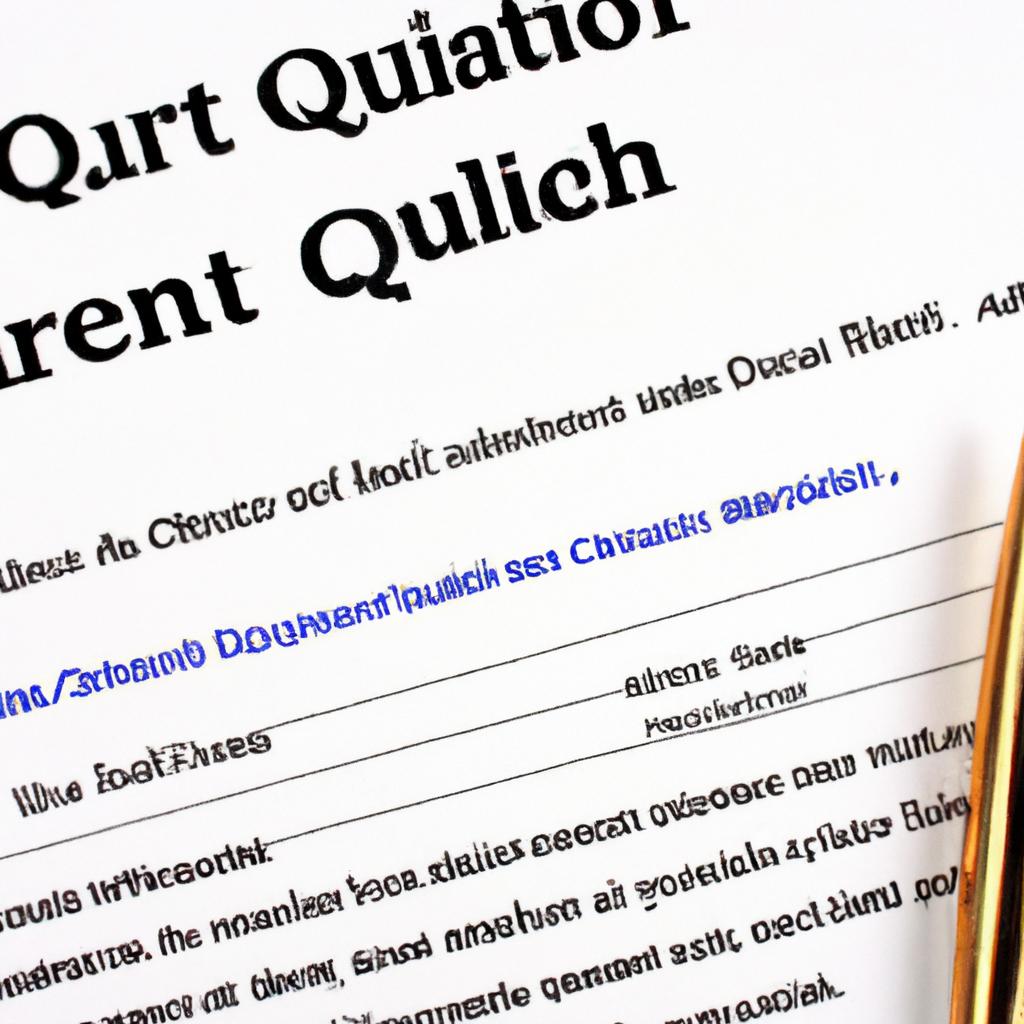Obtaining a quit claim deed form is a fundamental aspect of real estate transactions that can often be overlooked. At Morgan Legal Group, we understand the importance of properly executing this legal document to transfer ownership of real property. Whether you are looking to add or remove a name from a deed, settle a divorce, or transfer property between family members, having the correct form is essential. In this informative article, we will guide you through the process of obtaining a quit claim deed form, ensuring that your real estate transactions are completed with precision and clarity.
Essential Components of a Quit Claim Deed Form
When obtaining a quit claim deed form, it is crucial to ensure that all essential components are included to ensure the validity and effectiveness of the document. A well-drafted quit claim deed form should include the following key elements:
- Parties: Clearly identify the parties involved in the transfer of property, including the grantor (the individual giving up their interest in the property) and the grantee (the individual receiving the interest).
- Description of Property: Provide a detailed and accurate description of the property being transferred, including the legal description, address, and any relevant identifying information.
- Consideration: State the consideration or payment, if any, being exchanged for the transfer of property. This can be monetary or non-monetary in nature.
- Signatures: Require the signatures of all parties involved in the transfer, as well as any witnesses or notary public, to ensure the document is legally binding.
In addition to these essential components, it is important to consult with a qualified legal professional, such as the experts at Morgan Legal Group in New York City, to ensure that the quit claim deed form complies with all relevant laws and regulations. By taking the time to carefully draft and review the document, you can avoid potential issues or disputes in the future and ensure a smooth transfer of property ownership.
Navigating the Legal Requirements for Obtaining a Quit Claim Deed Form
When it comes to obtaining a quit claim deed form, it is important to understand the legal requirements involved in the process. As a crucial document in real estate transactions, a quit claim deed transfers the ownership of a property from one party to another without any warranty of title. To navigate the legal aspects of obtaining a quit claim deed form, there are certain steps you should follow:
- Identify the parties involved in the transaction, including the grantor (current owner) and grantee (new owner).
- Obtain a legally valid form that complies with the specific requirements of your state.
- Ensure that the document is properly executed and notarized to be legally binding.
At Morgan Legal Group, we specialize in estate planning and real estate law, including the preparation and execution of quit claim deeds. Our experienced team of attorneys can guide you through the legal requirements for obtaining a quit claim deed form and ensure that your real estate transactions are handled professionally and efficiently. Contact us today for expert advice on navigating the complexities of real estate law in New York City.

Recommendations for Choosing the Right Quit Claim Deed Form Provider
When looking for the right quit claim deed form provider, it is crucial to consider the following recommendations to ensure a smooth and legally binding transaction. **First and foremost**, it is essential to choose a provider that specializes in real estate law and has a solid reputation in the industry. Look for providers that have years of experience and positive reviews from satisfied customers.
Additionally, it is important to verify that the quit claim deed form provided by the provider complies with the laws in your state. Each state has specific requirements for legal documents, so it is crucial to ensure that the form meets all the necessary criteria. Finally, make sure to carefully review the terms and conditions of the provider to avoid any hidden fees or unfavorable clauses. By following these recommendations, you can confidently choose the right quit claim deed form provider for your needs.
| Provider | Experience | Customer Reviews |
|---|---|---|
| Morgan Legal Group | 10+ years | 5 stars |

Key Considerations Before Filling Out a Quit Claim Deed Form
When filling out a quit claim deed form, there are several key considerations that should not be overlooked. These considerations can help protect your interests and ensure the transaction goes smoothly. Here are some important factors to keep in mind:
- Accuracy: It is crucial to accurately fill out all the information on the deed form to avoid any disputes or legal issues in the future.
- Legal Description: Make sure to include a detailed legal description of the property being transferred to prevent any confusion about the boundaries and location.
- Notarization: Most states require quit claim deeds to be notarized for them to be legally valid. Be sure to follow the necessary notarization procedures.
- Consultation: It is highly recommended to consult with a real estate attorney before filling out a quit claim deed form to ensure all legal requirements are met.
By paying attention to these , you can protect your interests and avoid any potential pitfalls in the property transfer process. It is always best to seek professional advice to navigate the complexities of real estate transactions and ensure everything is done correctly.
Q&A
Q: What is a quit claim deed form and why do I need one?
A: A quit claim deed form is a legal document used to transfer ownership of a property from one party to another. You may need one if you are transferring ownership of a property, changing the way property is held, or adding or removing someone’s name from the title.
Q: How can I obtain a quit claim deed form?
A: You can obtain a quit claim deed form from a variety of sources, including online legal document providers, your local county clerk’s office, or by hiring a real estate attorney to draft one for you.
Q: Are there any rules or requirements for filling out a quit claim deed form?
A: While the specific requirements may vary depending on your location, generally you will need to include the names of the grantor and grantee, a legal description of the property, and the signature of the grantor in order for the deed to be legally valid.
Q: Do I need to have the quit claim deed form notarized?
A: In many jurisdictions, quit claim deeds must be notarized in order to be legally valid. It’s best to check with your local county clerk’s office or a legal professional to determine the requirements in your area.
Q: What do I do with the completed quit claim deed form once it’s filled out?
A: Once the quit claim deed form is filled out and properly executed, it should be filed with the appropriate county or state office, such as the county recorder’s office, in order for the transfer of ownership to be legally recognized.
Insights and Conclusions
Now that you have learned how to obtain a quit claim deed form, you are one step closer to transferring ownership of your property. Remember, it is essential to follow the specific guidelines in your state and to seek the advice of a legal professional if needed. By taking the time to properly complete the form, you can ensure a smooth and hassle-free transfer of property. Good luck on your real estate journey!






